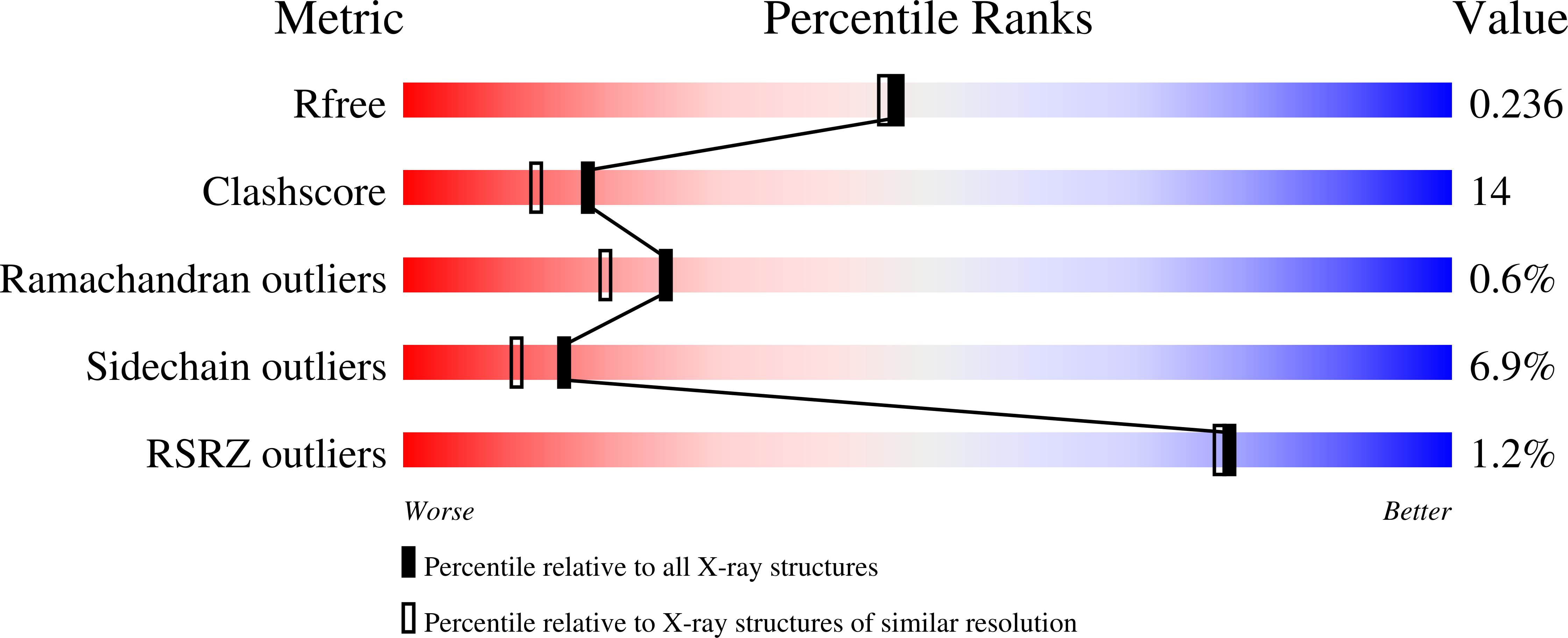Structural Basis of Enzymatic Activity for the Ferulic Acid Decarboxylase (FADase) from Enterobacter sp. Px6-4
Gu, W., Yang, J.K., Lou, Z.Y., Liang, L.M., Sun, Y., Huang, J.W., Li, X.M., Cao, Y., Meng, Z.H., Zhang, K.-Q.(2011) PLoS One 6: e16262-e16262
- PubMed: 21283705
- DOI: https://doi.org/10.1371/journal.pone.0016262
- Primary Citation of Related Structures:
3NX1, 3NX2 - PubMed Abstract:
Microbial ferulic acid decarboxylase (FADase) catalyzes the transformation of ferulic acid to 4-hydroxy-3-methoxystyrene (4-vinylguaiacol) via non-oxidative decarboxylation. Here we report the crystal structures of the Enterobacter sp. Px6-4 FADase and the enzyme in complex with substrate analogues. Our analyses revealed that FADase possessed a half-opened bottom β-barrel with the catalytic pocket located between the middle of the core β-barrel and the helical bottom. Its structure shared a high degree of similarity with members of the phenolic acid decarboxylase (PAD) superfamily. Structural analysis revealed that FADase catalyzed reactions by an "open-closed" mechanism involving a pocket of 8 × 8 × 15 Å dimension on the surface of the enzyme. The active pocket could directly contact the solvent and allow the substrate to enter when induced by substrate analogues. Site-directed mutagenesis showed that the E134A mutation decreased the enzyme activity by more than 60%, and Y21A and Y27A mutations abolished the enzyme activity completely. The combined structural and mutagenesis results suggest that during decarboxylation of ferulic acid by FADase, Trp25 and Tyr27 are required for the entering and proper orientation of the substrate while Glu134 and Asn23 participate in proton transfer.
Organizational Affiliation:
Laboratory for Conservation and Utilization of Bio-Resources, Key Laboratory for Microbial Resources of the Ministry of Education, Yunnan University, Kunming, China.















